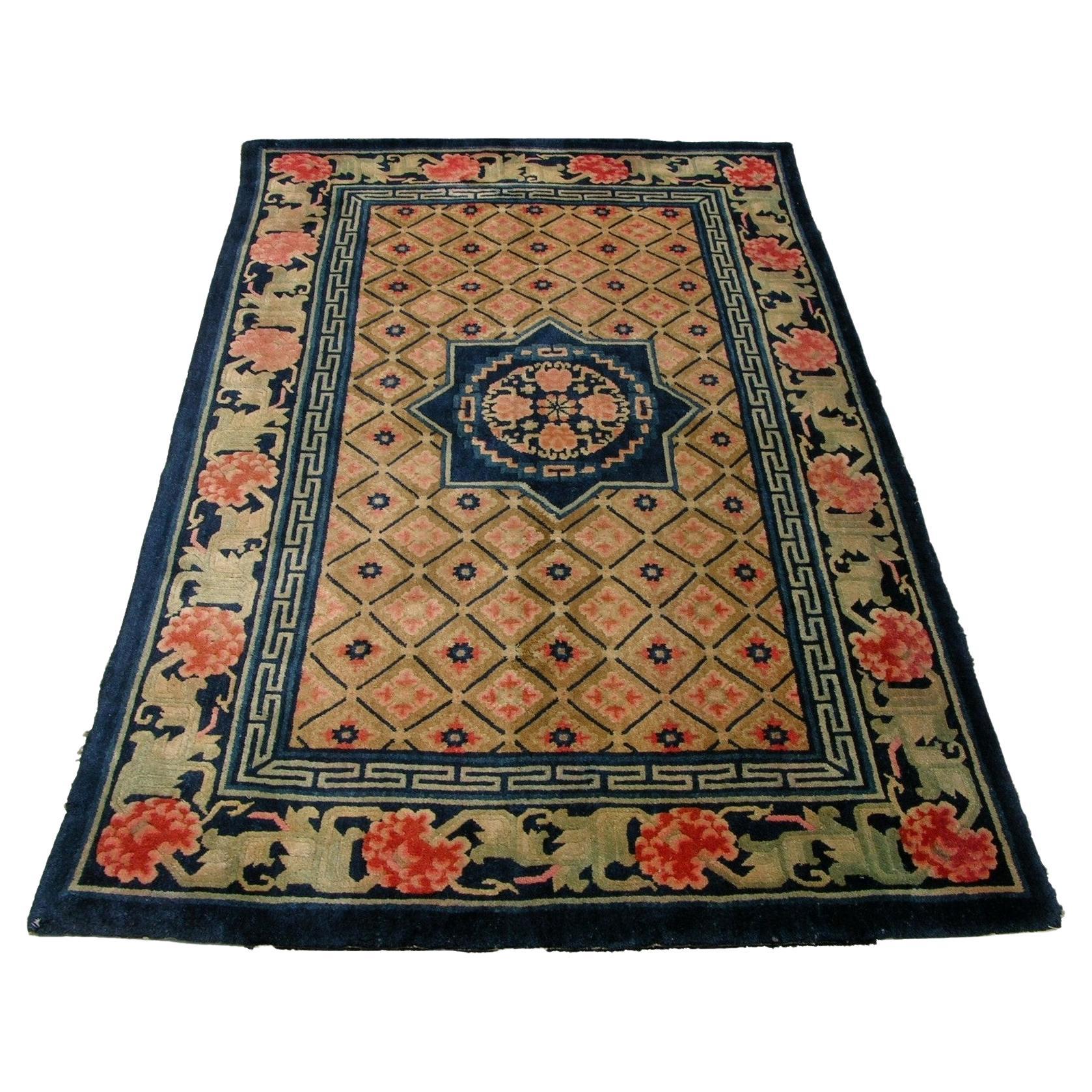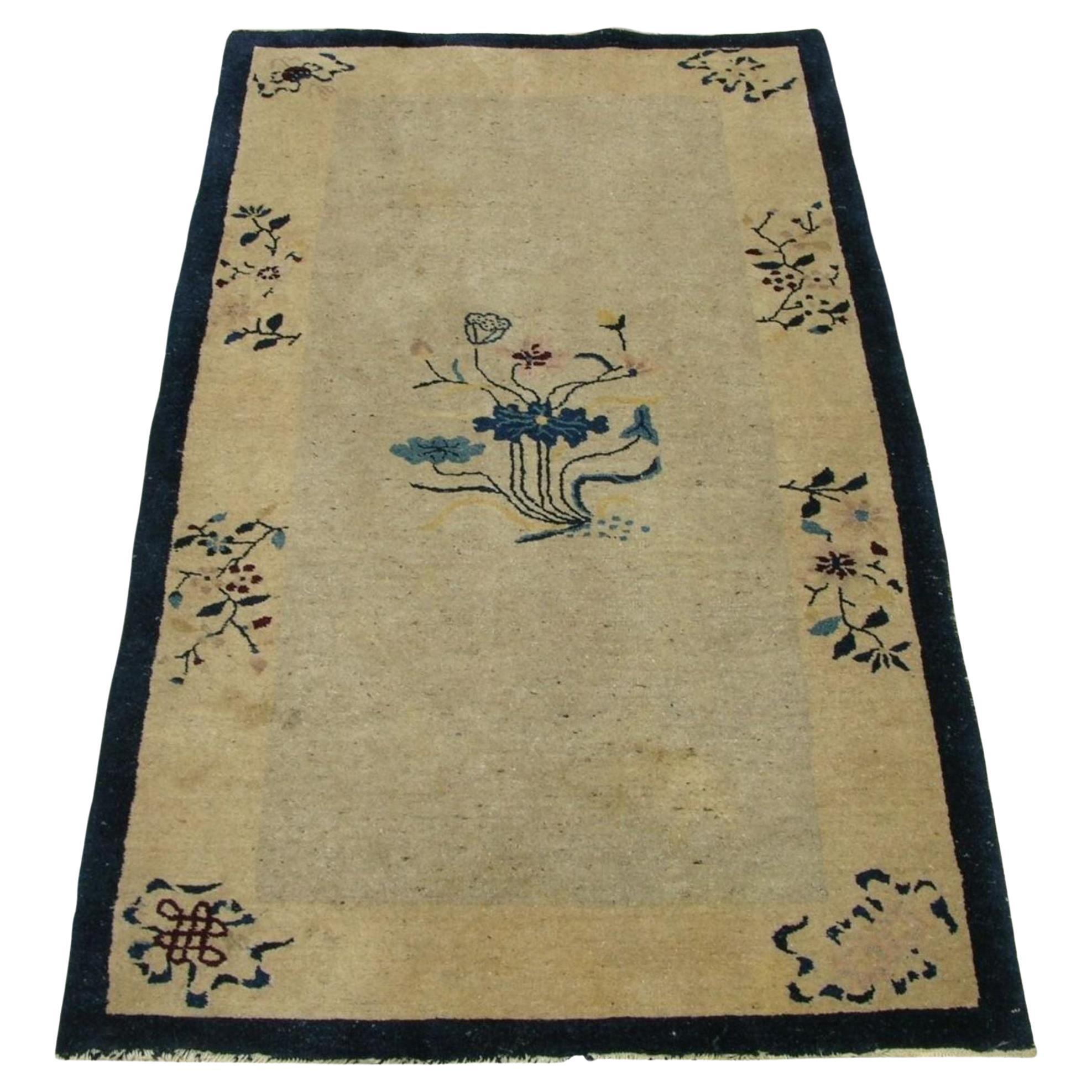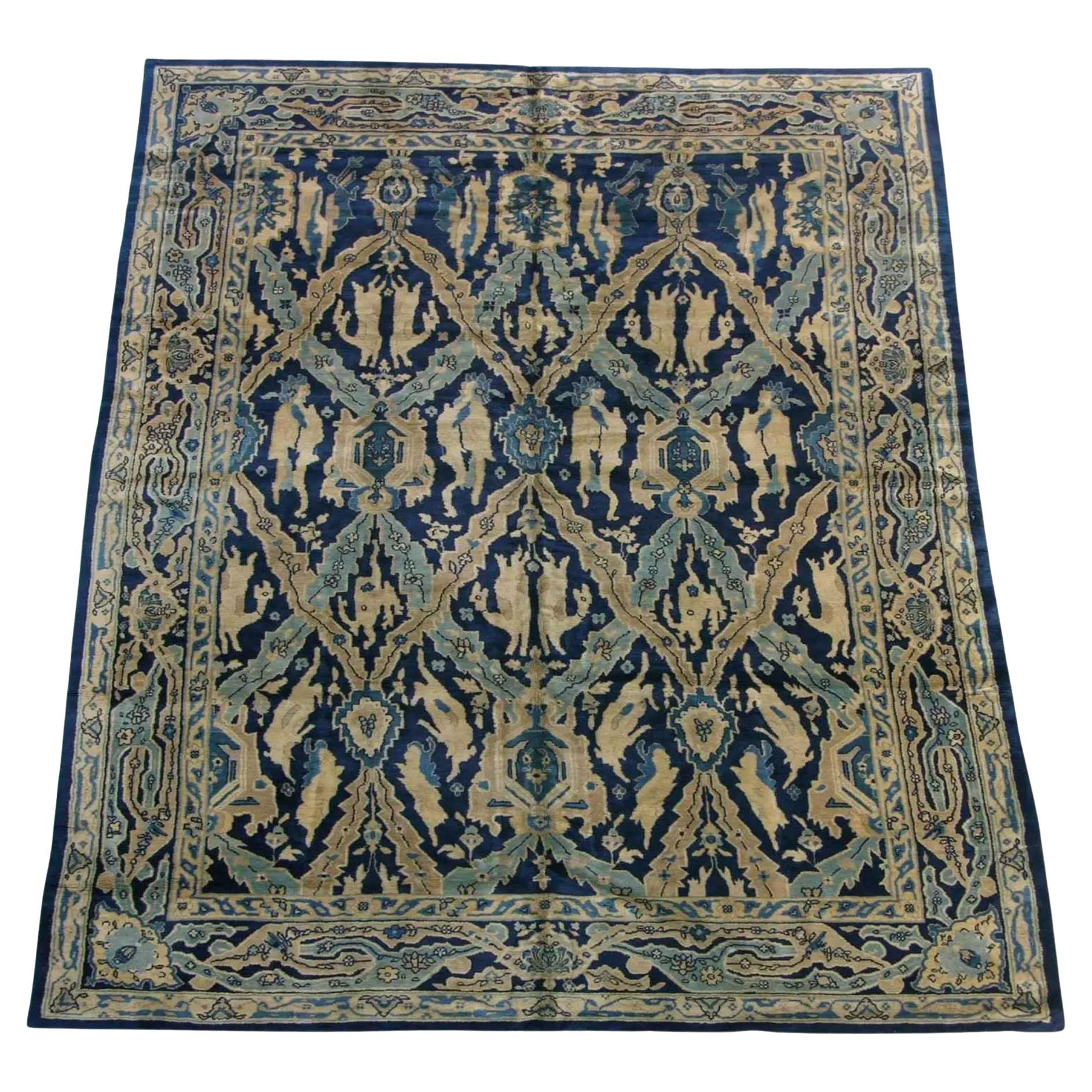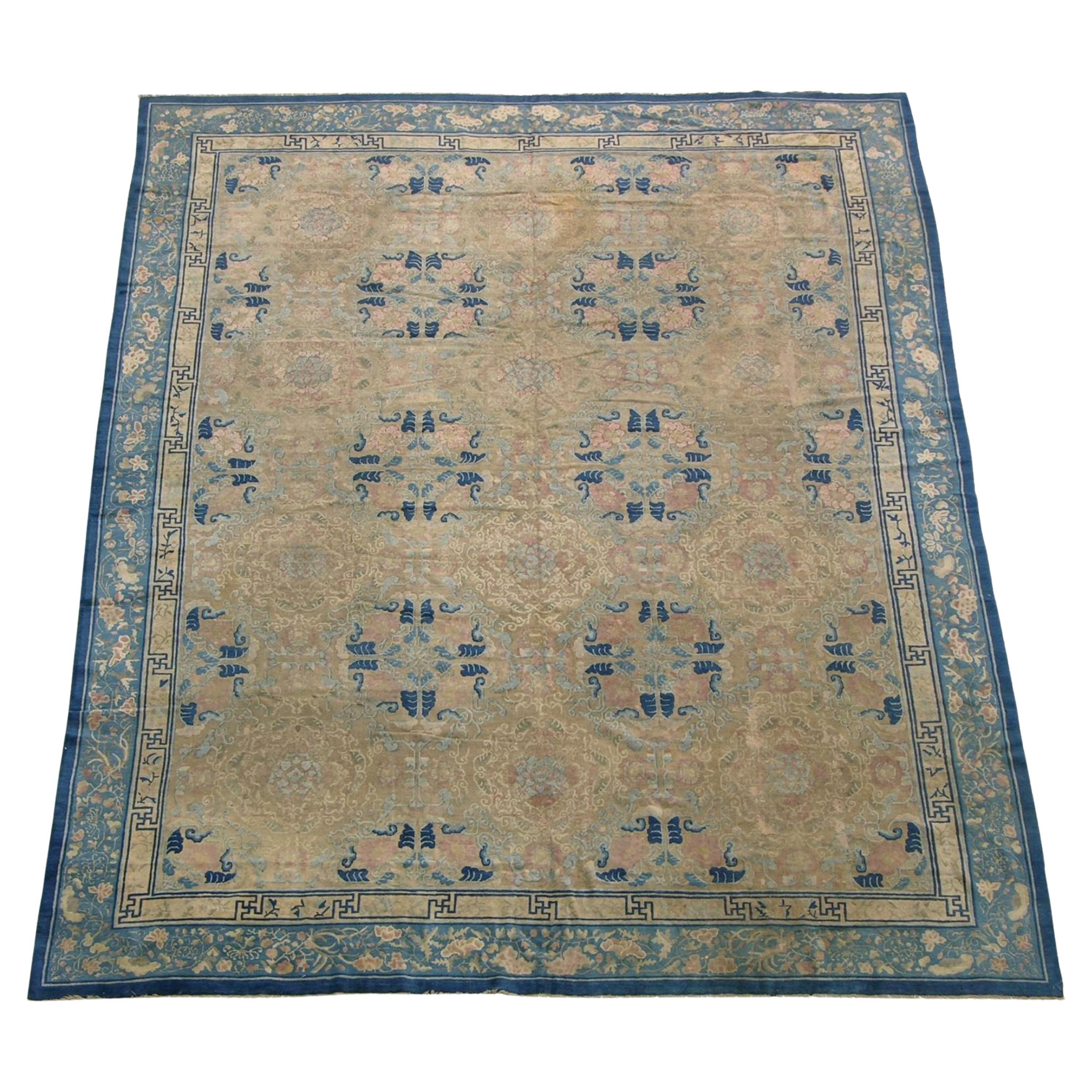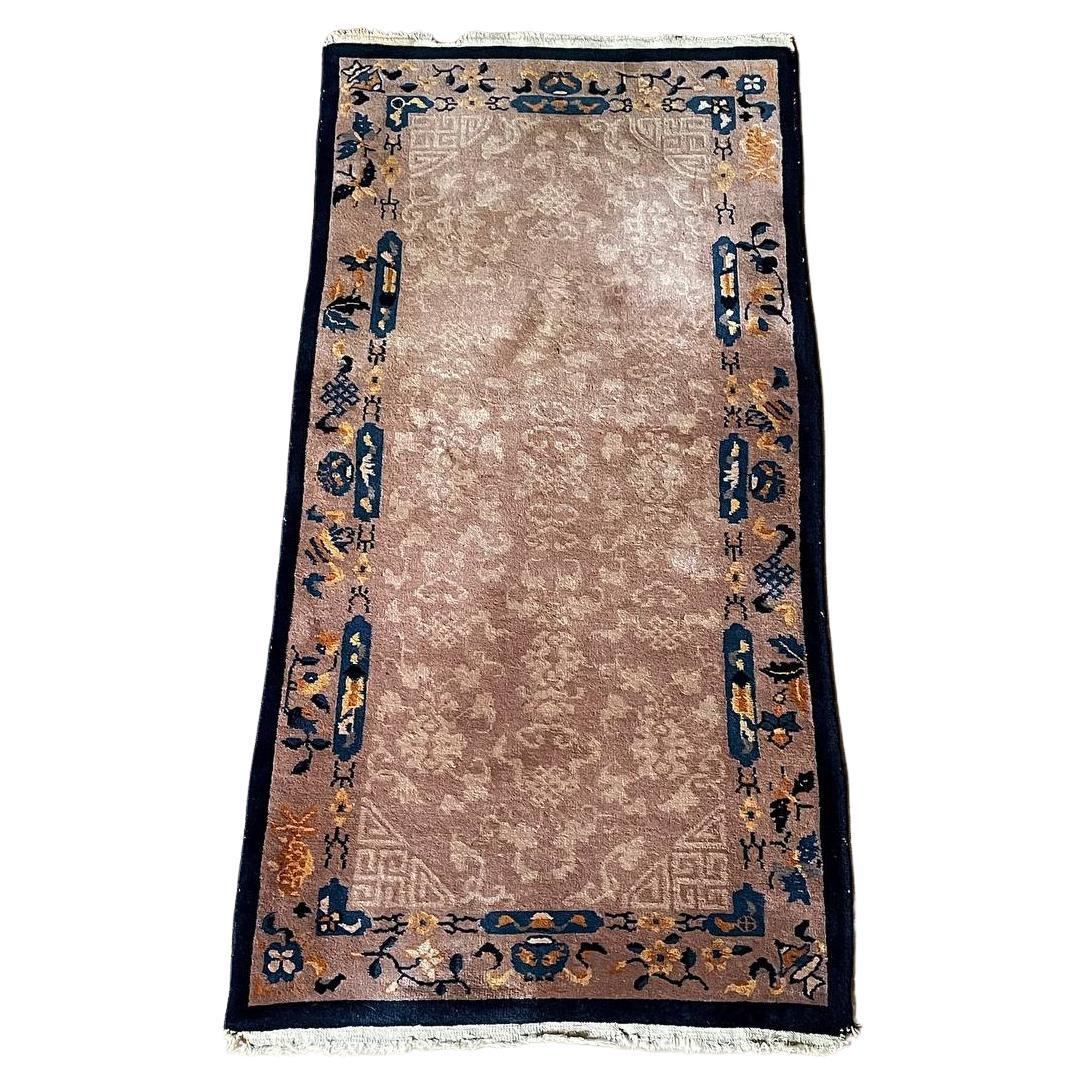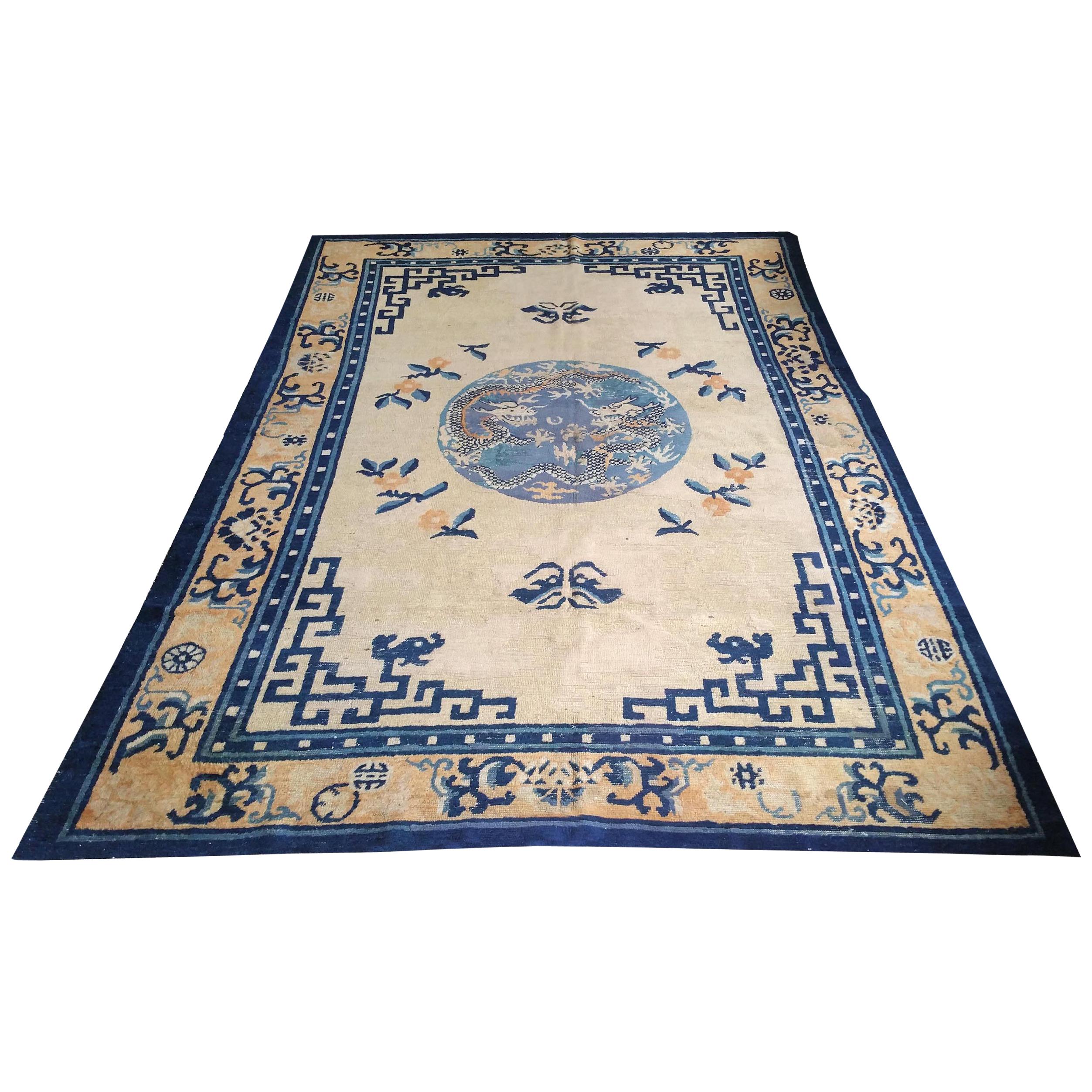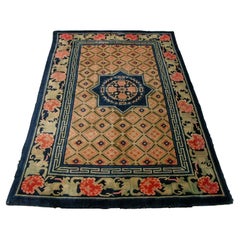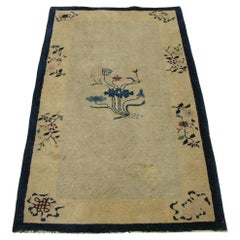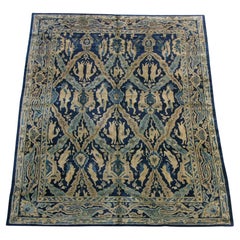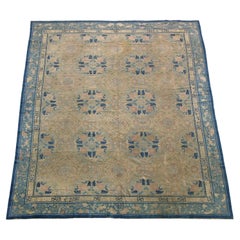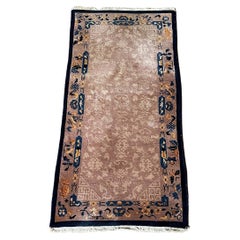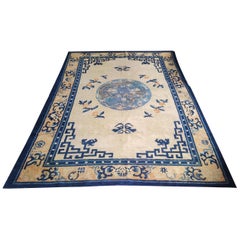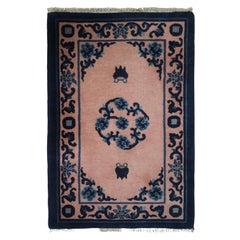Items Similar to 1900s Antique Chinese Small Rug - 7'2'' X 4'5''
Want more images or videos?
Request additional images or videos from the seller
1 of 5
1900s Antique Chinese Small Rug - 7'2'' X 4'5''
$4,500
£3,416.96
€3,907.55
CA$6,287.15
A$6,992.69
CHF 3,651.36
MX$85,093.55
NOK 46,633.48
SEK 43,733.98
DKK 29,163.51
Shipping
Retrieving quote...The 1stDibs Promise:
Authenticity Guarantee,
Money-Back Guarantee,
24-Hour Cancellation
About the Item
Antique Chinese Rugs, as opposed to most of the antique rug productions, were woven almost exclusively for internal consumption. Since they were mostly sheltered from European and Western influences, this offers us the reason why these carpets have a very unique truly ethnically Chinese look and appeal. In terms of materials, Chinese rugs are often woven from silk, and other materials like wool or cotton.
The art of knotting and weaving carpets was probably introduced in China somewhere between the 15th and 17th centuries. Some of the patterns in these early carpets were borrowed from those same patterns painted onto porcelain and other Chinese art. These carpets showed up in the imperial courts during their time. Today, it’s incredibly rare to find a Chinese carpet from the 17th or 18th century outside of a museum.
Only during the early part of the 19th century did China open their markets to the countries of the west (for rugs – they have been exporting porcelain, bronzes, wooden and other works of art for many years prior to the 19th century).
It is during this period (the early 1900′s and on) that we see a major and unmistakable change in the production, abandoning the traditional ornamental look to a more open and even Chinese Art Deco design. This shift in production brought with it a more commercial approach to the Chinese rug market with less attention to the quality and artistry of every single piece to more mass appeal look and price. This explains why there are so many of the so called Art Deco Chinese carpets in the market today.
To attain the true essence of Chinese weaving one merely needs to compare the pre-1910 production to the later ones. While the textile industry in China is rich in history and centuries old the earliest surviving examples of the craft are believed to have been produced during the time of Ch’ung Chen, the last emperor of the Ming dynasty who died during the first half of the 17th century.
The Ming dynasty which followed survived until the creation of the Chinese republic in 1912. This would be a good time to note that while most rugs are attributed to a specific manufacturer or region, authorities and scholars attribute the age vintage of any specific rug to the ruling emperor of the time. In stark difference from the other rug weaving origins, in China, the artistic impression far exceeded the importance of the quality of any said piece, the end result being that some of the beautiful pieces have coarser knotting.
Rich in culture, history and folklore Chinese carpets incorporate design almost never seen in any other type of rug. Dragons, local art and ornamental objects are almost always a trademark of these productions. Some of the symbols used in Chinese rugs have taoist and buddhist religious origins.
About the Seller
5.0
Platinum Seller
Premium sellers with a 4.7+ rating and 24-hour response times
Established in 1920
1stDibs seller since 2023
63 sales on 1stDibs
Typical response time: <1 hour
- ShippingRetrieving quote...Shipping from: Los Angeles, US
- Return Policy
Authenticity Guarantee
In the unlikely event there’s an issue with an item’s authenticity, contact us within 1 year for a full refund. DetailsMoney-Back Guarantee
If your item is not as described, is damaged in transit, or does not arrive, contact us within 7 days for a full refund. Details24-Hour Cancellation
You have a 24-hour grace period in which to reconsider your purchase, with no questions asked.Vetted Professional Sellers
Our world-class sellers must adhere to strict standards for service and quality, maintaining the integrity of our listings.Price-Match Guarantee
If you find that a seller listed the same item for a lower price elsewhere, we’ll match it.Trusted Global Delivery
Our best-in-class carrier network provides specialized shipping options worldwide, including custom delivery.More From This Seller
View All19th Century Antique Art Deco Chinese Rug
Located in Los Angeles, US
The Older Antique Chinese Rugs, as opposed to most other productions of Chinese goods, were woven almost exclusively for internal consumption. Since they were mostly sheltered from E...
Category
Antique Early 1900s Chinese Chinese Chippendale Chinese and East Asian Rugs
Materials
Wool, Cotton
Early-19th Century Antique Chinese Small Rug - 5'10'' X 3'3''
Located in Los Angeles, US
Antique Chinese Rugs, as opposed to most of the antique rug productions, were woven almost exclusively for internal consumption. Since they were mostly sheltered from European and We...
Category
Antique Early 1900s Asian Ming Russian and Scandinavian Rugs
Materials
Wool
1900s Antique Chinese Rug - 11'8'' X 9'2''
Located in Los Angeles, US
Antique Chinese Rugs, as opposed to most of the antique rug productions, were woven almost exclusively for internal consumption. Since they were mostly sheltered from European and We...
Category
Vintage 1910s Chinese Chinese Export Chinese and East Asian Rugs
Materials
Wool
1900 Fine Antique Chinese Rug
Located in Los Angeles, US
Antique Chinese Rugs, as opposed to most of the antique rug productions, were woven almost exclusively for internal consumption. Since they were mostly sheltered from European and We...
Category
Antique Early 1900s Other Russian and Scandinavian Rugs
Materials
Wool, Cotton
Antique Chinese Floral Design Rug
Located in Los Angeles, US
Antique Chinese Rugs, as opposed to most of the antique rug productions, were woven almost exclusively for internal consumption. Since they were mostly sheltered from European and We...
Category
Antique Early 1900s Asian Other Russian and Scandinavian Rugs
Materials
Wool, Cotton
1910s Antique Worn Chinese Rug - 8'6'' X 5'9''
Located in Los Angeles, US
Antique Chinese Rugs, as opposed to most of the antique rug productions, were woven almost exclusively for internal consumption. Since they were mostly sheltered from European and We...
Category
Vintage 1910s Unknown Chinese Export Chinese and East Asian Rugs
Materials
Wool, Cotton
You May Also Like
Antique Chinese Peking Art Deco Rug – Hand-Knotted Wool w/ Floral
Located in Los Angeles, CA
Condition: Original Vintage Condition
Materials: Hand-Knotted Wool
Style: Chinese Peking
Dimensions: 0.25”H x 73”W x 36”D
This vintage Chinese Art Deco rug from the 1930s is a beau...
Category
Vintage 1920s Chinese Other Chinese and East Asian Rugs
Materials
Wool
Antique Chinese Ningxia Rug 6' 0" x 8' 6"
Located in New York, NY
Antique Chinese Ningxia rug, size: 6'0" x 8'6".
Category
Antique 1880s Chinese Chinese and East Asian Rugs
Materials
Wool
Antique Chinese Rug - 19th Century Asian Rug, Antique Rug, Handmade Wool Rug
Located in Sultanahmet, 34
We offer a gorgeous 19th century antique china rug that will make you feel like you've stepped back in time. Each stitch tells a story of meticulous craftsmanship and long history. W...
Category
Antique 19th Century Chinese Chinese and East Asian Rugs
Materials
Wool
Antique Art Deco Chinese Rug Antique Chinese Rug Antique Art Deco Peking
Located in New York, NY
Antique Peking rug Chinese Art Deco rug pink purple handmade Chinese rug
2x3
2'4" x 3'4"
71cm x 102cm
"This is a beautiful antique...
Category
Vintage 1930s Chinese Chinese and East Asian Rugs
Materials
Wool
$719 Sale Price
20% Off
Antique Chinese Peking Rug, 19th Century
Located in San Francisco, CA
Antique Chinese Peking Rug, 19th Century
Additional Information:
Dimensions: 5'8" L x 4'0" W
Category
Antique 19th Century Chinese Chinese and East Asian Rugs
Materials
Wool
Antique Art Deco Chinese Carpet, circa 1910
Located in Morton Grove, IL
This antique carpet is hand knotted in China circa 1910. Known as mainland Chinese these carpets were made with high quality wool and all organic dyes, which makes them really age we...
Category
Vintage 1910s Chinese Art Deco Chinese and East Asian Rugs
Materials
Wool
More Ways To Browse
Imperial Russian Antiques
Antique Russian Objects
Chinese Taoist
Ming Dynasty Silk
Ming Dynasty 18th Century
Taoist Art
Antique Russian Porcelain
Dior Dragon
Russian Imperial Porcelain
Italian Lacquer Dining Room Sets
Modern Low Stools
Stingray Table
Ceramic Round Table
Dining Table With Wheels
French Brass Console
Hand Hammer Sterling
Low Black Coffee Table
Pair Of French Consoles
